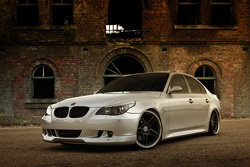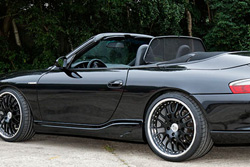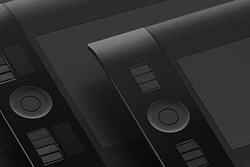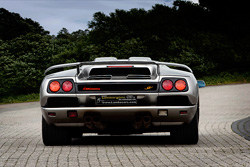TAKING CARE OF YOUR EQUIPMENT

Canon PowerShot G1 - 7.0mm 1/150 f4.0
Basic level tutorial by Mark
We've received a lot of questions from people that are just starting in automotive photography on how they should keep their rather important investment in top shape, so we’ve decided to make an article about how we take care of our camera and lenses.
Bag it
An obvious one, but a good camera bag is one of the most important investment you can make. It should be easy to open and take your material out of, but at the same time offer enough protection for your equipment. This means it should be waterproof to a certain extend and offer enough padding just in case you happen to drop it.
You have several options here, from a shoulder bag to a back pack, select the one you like most, but make sure the straps are wide enough so you can carry it comfortably, you will be lugging it around for hours on some occasions.
The cap
There is a good reason why you get a free lens cap when you buy a lens, it protects the front glass from scratches. Did you note there is a second cap at the other end too ? If you don't have the lens on your camera put this cap on it too, it will prevent dust from entering the lens.
Gravity kills
 The most important thing to remember is : do NOT drop it ! This might seem obvious, but we’ve seen countless people with a small fortune hanging from their shoulder only to see it slip.
The most important thing to remember is : do NOT drop it ! This might seem obvious, but we’ve seen countless people with a small fortune hanging from their shoulder only to see it slip.
They could just avoid it from crashing to the floor, but you can count on your luck running out any time soon and you’ll find your camera and lens in pieces on the floor, do not hang your camera on your shoulder with a standard strap.
Strap up
If you are taking photographs put the strap around your neck, we’ve seen it many time, the camera in the right hand, the strap hanging close to the floor and when they turn around to take another shot the strap just happens to get caught by something … bang ! Put the strap around your neck, that is what is there for anyway. Some people remove the strap completely and put a wrist strap on the body, we don’t use it, but it could be a good idea if you like.
Showers
Keep you gear away from the rain ! Unless you’ve invested in the top of the line body and lenses (these are somewhat water resistant) your camera does not like a shower as much as you do. A light drizzle won’t hurt your unit most of the time, but all it takes is one drop of water in the wrong place and you’re out of luck. There is no warranty against water damage, so you’ll have to pay for the repairs if they remove your lens from the body and water comes out of it.
Dancing in the rain
Naturally you can still take photographs while it rains, however when it really pours down I’m inside if possible, I for one don’t like to get soaking wet taking photographs, but there are exceptions. For instance during a race you can make some of the most stunning shots while it rains and the track is wet, but you’ll have to take precautions on your material, get a rain cover if you want to be outside in heavy rain.
A good quality chamois leather is also a very wise investment, get one that's big enough for both your camera and the lens so you can cover them both when you do get caught in the rain, you would be surprised how much water a good chamois leather can absorb.
Clean it
It’s only a matter of time before your equipment will get dirty, so you’ll have to clean it from time to time. Use a soft cloth to remove dust from the outside of the camera and lenses, we always use a microfiber cloth for this. Do NOT use a wet cloth as this could damage the camera
Cold and hot
In case you’ll take your camera bag from outside into a warm room leave everything in the bag for a while to avoid condensation inside the lenses, also put a small bag of silica gel inside the bag (you can find this in most all boxes of your equipment, it draws the moisture from the air). Never store your camera in the boot of your car while it is parked outside in the sun, the extreme temperature isn’t too healthy for this delicate piece of equipment. Extreme cold should be avoided too by the way, check the manual that came with your DSLR to see between which temperatures it is safe to use it before you go out in a snow blizzard.
Fragile
Modern lenses use glass or any other material which can be scratched or get damaged when used, we always put either a neutral UV filter in front of our lenses, if you are not a fan of filters we encourage you to use the lens hood at all times, even when shooting indoors, it will protect the front element of your lens most of the time.
If you are not using the lens put both the front and rear cap on it, the rear one will keep the dust from entering the lens while the front one will protect your glass. If you must clean the glass use a special lens cloth to do the job, a nice, soft lens brush can help too and a good lens blower is worth it’s weight in gold, get one right from the start.
Do not touch the glass of your lens with your fingers, the residue on your skin can damage the coating of a lens in the long run, if there are traces on the glass you can’t remove with the cloth use a bit of lens cleaning fluid, never use plain water !
Long term parking
In case you’ll be storing your equipment away for a longer period of time (say two months or more), it would be a good idea to remove the battery (or batteries) from the camera or grip. It doesn’t happen too much anymore with the modern day rechargeable batteries used today, but they can still leak. If they do leak inside your camera you’ll be presented with a nice bill for the repairs, if they leak outside of your camera all you need to do is buy a new battery … I’m sure you can work out the math on this one yourself.
Keep your bag as far away from magnets as possible, I know it sounds obvious, but magnets and electronic devices do not match together nicely, especially when exposed to each other for longer periods of time.
As mentioned earlier, put some silica gel inside the bag when storing your equipment to counteract any possible condensation along the way, you do not want to get a nasty mold surprise when you open up your bag at the beginning of the racing season.
Switch off
When you put your camera in it’s insulated bag for storage (long or short term), switch it off, this will avoid draining the batteries when stored and most DSLR these days have a very short start up time anyway, so there is no real need to store the camera switched on between shoots.
Backseat driver
Do not put your camera bag in the trunk of your car while traveling, it gets too hot in there (the exhaust goes underneath it, and the sun hits it relentlessly during the summer), instead put the bag inside the car, preferably on the floor (at the rear or at the front when there is no passenger). Don’t put it on the seat, I admit it is softer for the camera to sit on, but when you have to brake it will be thrown onto the floor anyway, so put it there in the first place to avoid any damage.
Cereals
Well not exactly your breakfast, but a good idea is to note the serial number of all your equipment somewhere remote to your kit, if it does get stolen you will at least have the serial numbers to give to the insurance (do get an insurance on this expensive gear) and when filing the police report.
Use it !
The quickest way to get your gear ruined is to leave it in the closet all year long, use it, enjoy it, don’t be afraid to take pictures from other things than cars, you probably have a family and friends, most of them like to be photographed at parties or during special events in their live. You own the equipment so you can use it too, no use to invest a lot of money in something you will only use sporadically. In our region there isn’t a car show every weekend, so keep the wife (or husband) happy and your photographing mind active.
 |
CPT Premium member BONUS : 23026 If you would like to print the Taking care of your equipment article you can download our special PDF which is optimized for hardcopy layout. |
Note : commercial use or publishing of our tutorials in any way, written or electronic, is strictly forbidden, we present these for your personal development only. None of our material may be published in any way without prior, written permission from the Car Photography Tutorials founder. All workflows and photographs are copyright protected and owned by the Car Photography Tutorials team unless stated otherwise
Advertisement
Become a MEMBER
Premium Membership
Become a CPT Premium Member and download all our tutorials including a PDF for printing and the result as a PSD file with layers if any.
Interesting articles
Using actions to add a watermark to your photos
We show you a way to add a custom watermark to all your photos, no matter if they are in landscape or in portrait orientation using actions that require no manual intervention.
Creating a derelict at dusk look in post processing
Brand new cars always look good in an abandoned house location, and even better at dusk when the warm light is available, unfortunately finding both and still being safe enough to put an expensive car in front of the derelict house could be difficult.
The secrets behind a great car photo
Ever wondered why your shot doesn't look as good as the one of the same car in that magazine in front of you ? We give you a few tips to take better photographs here.
Use a mouse or a tablet for post processing
Perhaps a mouse isn't the most appropriate option when working on automotive photos in post processing, so let's take a look at a pen and tablet.
Background replacement made easy
There are times you've managed to photograph a great looking car, but the background is far from good looking ... no problem, just replace it with a different one.




